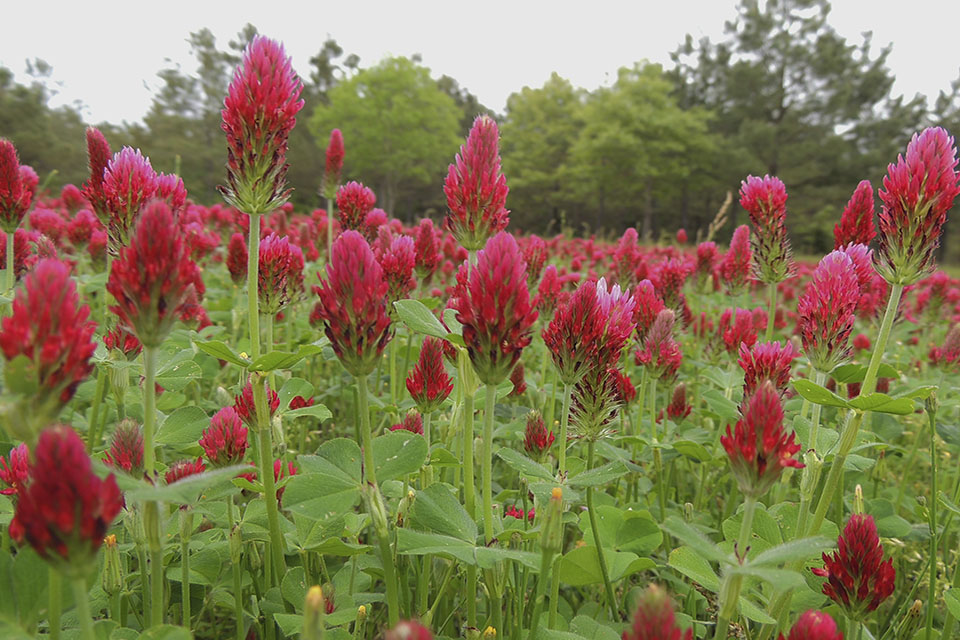Absolutely! Cover cropping is not just for farmers or large-scale growers and is well suited to any garden. Cover crops reduce erosion, suppress weeds, improve soil structure by creating soil aggregates or “crumbing,” and feed the soil as they exude sugars and other substances through their roots.
Dr. Christine Jones, an Australian soil ecologist, describes these exudates as “Liquid Carbon.” “Liquid carbon is basically dissolved sugars. Sugars are formed in plant chloroplasts during photosynthesis. Some of the sugars are used for growth and some are exuded into soil by plant roots to support the microbes involved in nutrient acquisition.” She goes on to say, “Soil microbes use sugars to create complex, stable forms of carbon, including humus.”
“Rhizodeposition is a special advantage to working with cover crops,” says Barbara Pleasant of Mother Earth News. “Many plants actually release sugars and other substances through their roots. They are like little solar engines, pumping energy down into the soil.”
Cover crops can be planted as a fall/winter cover or between the crop rows. When cover crops are taken down, they can be composted, chopped in, or even better, used as a plant through surface mulch. If you decide to chop them in, wait three to four weeks (or more) before planting. Decomposing plant residues can tie up soil nitrogen and in some cases produce allelopathic substances that temporarily hinder the germination of other plants.
Choosing what cover crop to grow depends on the time of year and stages of plant growth cycles. Early fall is the best time to plant the powerful combination of oats and winter peas. This pair combines the nitrogen fixing capacity of a legume (peas) with the oats contributing more than adequate organic matter. When planted in September, they both make a little fall growth and in the spring the peas climb right up the oats. North of zone 5 however, both can be winterkilled. Be sure to take them down just before they bloom in the spring. If you let them go to seed they could get out of control.
Another cover that needs a good head start on winter is hairy vetch but it is only hardy to zone 4. In the spring, about four weeks before planting peppers and tomatoes, chop it down just below the crown and plant through the dried mulch.
In late fall, a good choice would be the very cold-hardy “cereal rye.” After the weather and soil turn cold the rye will begin to sprout. You’ll want to take this one out in early spring before the plants develop tough seed stalks.
Buckwheat is not wheat but rather a broadleaf plant that grows quickly, effectively smothering weeds within a week or two and maturing to 24 inches in six to eight weeks. You can plant buckwheat between spring and fall vegetable plantings. Its white flowers attract beneficial insects. If you need to reclaim areas overtaken by invasive weeds, buckwheat is an excellent choice.
Rolling back to fall again you can beautify your garden by planting bachelor’s buttons and crimson clover. Whatever clover you decide to plant, be it white dutch, yellow blossom, or crimson, they will attract beneficial insects, fix nitrogen, and supercharge the soil. If your soil has an optimal mineral balance you will be feeding those nutrients back into the soil by allowing the mulch created to decompose when you take your cover crops down.
We believe that the first line of defense against erosion and weeds is a mineral balanced soil. A balanced soil results in excellent water infiltration, retention, and drainage. Such a fertile soil will not encourage the weeds that prefer poor soil, and those that like fertile soil can be reduced by cover crop mulch.
Check with your local farm store or mail order sources for untreated, certified organic cover crop seeds. With a little research you can transform your garden into a sustainable mini-farm that will beautify your surroundings and provide you with the most flavorful, nutrient-dense produce possible.
Resources:
“Use Cover Crops to Improve Soil,” Barbara Pleasant of Mother Earth News, October/November 2009
“Cover Crop Basics,” Erika Jensen of Organic Life, July 8, 2015
“SOS: Save our Soils,” Dr. Christine Jones Interview, Acres Magazine, March 2015


